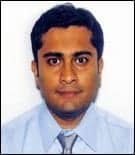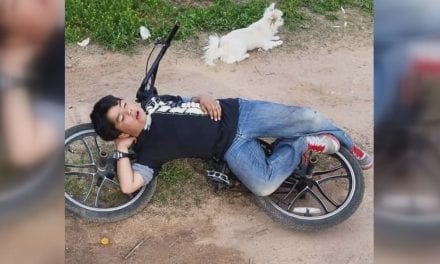An adolescent with mild mental retardation presented to our clinic with a rare case of isolated cataplexy that included provoked and unprovoked events. This patient case, which does not have a definitive etiology, highlights the importance of reviewing the diagnosis and pursuing additional diagnostic tests to broaden the differential and treatment options.
BACKGROUND
Cataplexy is an abrupt, transient loss of bilateral postural muscle tone without altered awareness during wakefulness, precipitated by emotions such as anger or laughter. Episodes can vary in duration, frequency, severity, and body area affected. Triggers include fatigue, emotional stress, and medications (eg, alpha-1 adrenergic blockers).
Cataplexy, excessive daytime sleepiness (EDS), sleep paralysis, vivid dreams, and hypnagogic hallucinations are cardinal symptoms of narcolepsy. Sleep paralysis, vivid dreams, and hypnagogic hallucinations can occur in normal individuals. However, in the setting of EDS, the presence of definite cataplexy alone can substantiate the diagnosis of narcolepsy. In some cases, cataplexy may precede the onset of EDS. The absence of cataplexy does not rule out narcolepsy. Isolated cataplexy is a rare phenomenon, but has been reported as an inherited autosomal dominant condition,1,2 in association with structural lesions of the brainstem,3 hypercalcemia,4 inborn errors of metabolism and genetic disorders (eg, Norrie disease, Coffin-Lowry syndrome, and Moebius syndrome5), and lipid-storage disorders (eg, Niemann-Pick disease type C).5,6
PATIENT CASE
SK is a 17-year-old right-handed Caucasian woman with mild mental retardation, dysmorphic facial features, and four years of recurrent “drop attacks.” Episodes were described as sudden onset of bilateral lower extremity weakness ranging from “weak, trembling knees” to generalized weakness with falls if standing. She denied aura or loss of awareness, duration was 1 to 3 seconds, and frequency varied from multiple daily to every 14 days. Triggers included stress, anxious thoughts, fear (eg, during thunderstorms), and excitement, and the episodes tended to occur more frequently during the initial days of the new school year. However, about half of these episodes were unprovoked. Event frequency and severity worsened after use of oral contraceptives for menstrual cycle management. Associated injuries included multiple abrasions, ankle sprains, and left lower extremity fracture. She denied EDS, vivid dreams, hypnagogic hallucinations, sleep paralysis, sleep attacks, snoring, witnessed apneic events, symptoms suggestive of restless legs or limb movements in sleep, parasomnias, and difficulty initiating/maintaining sleep.
SK’s medical history included mild asthma, developmental delay, mild mental retardation, and scoliosis. Current medications were montelukast, inhaled fluticasone/salmeterol, and ethinyl estradiol/levonorgestrel. She denied drug, food, or environmental allergies, or use of tobacco, alcohol, caffeine, or illicit drugs. Family history was negative for sleep disorders, although her maternal grandmother experienced infrequent syncopal events during stressful events (eg, funerals) in her older years. SK lived with her biological parents and received special education services at school.
On general exam, SK was 62 inches tall and weighed 154 pounds. The patient was an adolescent girl with normal vital signs (supine, standing, sitting), normocephalic, with nonspecific facial dysmorphic features and increased neck size. Neurologically, she followed simple two-step commands, was shy and immature, and had poor eye contact and paucity of speech. She had a few typical events in the waiting room during office visits; however, the events concluded before cognition and deep tendon reflexes could be evaluated.
DIAGNOSIS
Daily orthostatic vitals obtained three times a day for 10 consecutive days were normal. Two 72-hour ambulatory electroencephalogram (EEG) studies, one without and one with several typical attacks, demonstrated mild generalized slowing without epileptiform discharges or ictal patterns. She had normal serum chemistries, transthoracic echocardiogram (TTE), brain magnetic resonance imaging (MRI) with and without gadolinium, 32K array comparative genomic hybridization test, urine organic acids (including evaluation for succinic semialdehyde dehydrogenase deficiency), and Noonan syndrome testing. Nocturnal polysomnogram (NPSG) revealed absence of primary sleep disorders, no sleep fragmentation, normal sleep onset, and rapid eye movement (REM) sleep latency. Multiple sleep latency test (MSLT) immediately after NPSG revealed mean sleep latency of 12.5 minutes (five nap opportunities), and no sleep-onset REM periods (SOREMs). Human leukocyte antigen (HLA) typing demonstrated positive HLA-DRB1*1501 and HLA-DQB1*0602. Pending studies included cardiac Holter monitor, tilt table test, and Coffin-Lowry syndrome testing. Based on the event description and diagnostic studies, SK was diagnosed with isolated atypical cataplexy. It was believed that she may develop excessive daytime sleepiness in the future, and thus may be diagnosed as having narcolepsy with cataplexy.
TREATMENT
SK refused to wear a helmet, and her school required that she use a wheelchair to prevent injury from spells. Oral contraceptive medications were discontinued without change in events. She then failed subsequent trials with medications used for cataplexy. There was no response to long-acting venlafaxine that was titrated to 300 mg/day. Imipramine improved event frequency at 100 mg daily; however, after 2 months, benefit disappeared and she developed behavioral issues. A therapeutic trial of levetiracetam (antiepileptic medication) was also ineffective in controlling the events. Sodium oxybate (gamma hydroxybutyrate, GHB) titrated up to 3.75 g twice nightly reduced event frequency initially; but after 4 weeks, cataplexy increased to multiple events daily. Remarkably, event frequency improved as GHB was decreased and then discontinued. Most recently, SK was referred for psychological evaluation and prescribed clonazepam to treat underlying anxiety and stress that may induce events.
DISCUSSION
According to the International Classification of Sleep Disorders-2, narcolepsy with cataplexy can be diagnosed if there are 1) recurrent daytime naps or sleep attacks for longer than 3 months and cataplexy, or 2) in absence of causative medical/mental disorders, excessive sleepiness or sudden muscle weakness plus associated symptoms (sleep paralysis, hypnagogic hallucinations, automatic behaviors, disrupted sleep) and PSG demonstrating one or more a) sleep latency < 10 minutes, b) REM latency < 20 minutes, c) MSLT with MSL < 5 minutes, and d) MSLT with two or more SOREMs.7 Other diagnostic studies include HLA typing demonstrating positive DQB1*0602 or DR2 associated with narcolepsy with cataplexy; however, HLA DQB1*0602 is positive in 10% to 35% of the normal population. Other sleep disorders may be present; however, not as a primary cause of symptoms.7 Sudden atonia and areflexia usually observed during cataplexy is likely due to inhibition of muscle stretch reflexes and monosynaptic H reflexes.8 Continuous electromyography can distinguish subtle episodes of cataplexy; however, it may not be feasible. Cerebrospinal fluid (CSF) hypocretin-1 levels less than 110 pg/mL (< half normal value) have been associated with narcolepsy with and without cataplexy.9,10 Low CSF hypocretin levels are nonspecific and can be present in Guillain-Barre syndrome, Hashimoto’s thyroiditis, and multiple sclerosis.10
Isolated cataplexy is very rare and, outside of narcolepsy, usually presents as a manifestation of genetic disorders, inborn errors of metabolism, hereditary autosomal dominant condition, or brainstem lesions.1-4,6,11 SK’s case is atypical because it is isolated and some events appear unprovoked. Although she had partial responses to medications, including a tricyclic antidepressant and serotonin norepinephrine reuptake inhibitor (SNRI), there was no persistent control. When faced with an intractable atypical case, it is important to review the diagnosis and seek additional diagnostic tests (Table 1).
Conditions such as syncope (eg, cardiogenic, idiopathic, vasovagal), epilepsy, psychogenic nonepileptic spells (eg, conversion disorder), orthostatic hypotension, dysautonomia, neuromuscular weakness, transient ischemic attacks, and vestibular dysfunctions should be ruled out prior to confirming isolated cataplexy. Cardiac dysfunction, arrhythmias, dysautonomia, and orthostatic hypotension can be evaluated with electrocardiogram, TTE, tilt table testing, orthostatic vitals, and Holter monitor. Routine and ambulatory EEG or continuous video EEG monitoring can evaluate for epileptic activity associated with events. Brain MRI and MR angiography can be performed to evaluate brainstem lesions, strokes, masses, and intra- and extra-cranial arterial stenosis. Electronystagmography can assess for vestibular dysfunction.
According to American Academy of Sleep Medicine practice parameters, there are several medications for cataplexy. Sodium oxybate titrating up to 4.5 g twice nightly is effective for cataplexy and EDS.12-14 Antidepressants used to treat cataplexy include selective serotonin reuptake inhibitors (SSRIs) such as fluoxetine up to 20 mg in children and 60 mg/day in adults, SNRIs such as venlafaxine extended-release up to 75 mg/day in children and 300 mg/day in adults, atomoxetine (up to 100 mg/day in adults),15 and tricyclic antidepressants (TCAs) such as clomipramine up to 50 mg/day in children and imipramine up to 125 mg/day in adults.13-15 Other potentially useful antidepressants include monoamine oxidase inhibitors (eg, selegiline up to 20 mg/day). Wake-promoting agents such as modafinil and armodafinil may improve cataplexy symptoms; however, stimulants are not effective for cataplexy.14,15 Nonpharmacologic treatments should include parent and patient education, vocational counseling, and avoidance of driving until symptoms are controlled. As most of these medications are at least pregnancy category C (with the exception of sodium oxybate, which is pregnancy category B) and may be excreted in breast milk, consider avoiding these medications for pregnant or breastfeeding patients. Mothers should be advised to avoid handling or carrying their children in places where carpeted floors are absent to prevent accidents due to sudden cataplexy.
SK will continue nonpharmacologic treatments for her atypical cataplexy, including psychological treatment and fall precautions. If her events persist with current therapy, treatment with antidepressants such as SSRIs, other SNRIs, alternate tricyclic agents, atomoxetine, or wake-promoting agents that have been shown to be useful in cataplexy such as modafinil or armodafinil can be considered. A regular follow-up to evaluate for emergence of excessive daytime sleepiness and other narcolepsy symptoms is necessary.
Sricharan Moturi, MD, MPH, is currently in private practice at Middle Tennessee Psychiatric Clinic in Nashville, Tenn. He is board-certified in adult/general psychiatry by the American Board of Psychiatry and Neurology (ABPN), and is board-eligible in child and adolescent psychiatry and sleep medicine (adult and pediatric). Jennifer L. DeWolfe, DO, is an assistant professor of neurology at the University of Alabama at Birmingham. She is the director of UAB Neurology Sleep Services and the Birmingham Veterans Affairs Sleep Center. She is board-certified in neurology and sleep medicine by the American Board of Psychiatry and Neurology and specializes in epilepsy and sleep medicine. The authors can be reached at [email protected].
REFERENCES
- Gelardi JM, Brown JW. Hereditary cataplexy. J Neurol Neurosurg Psychiatry. 1967;30(5):455-7.
- Hartse KM, Zorick FJ, Sicklesteel JM, Roth T. Isolated cataplexy: a familial study. Henry Ford Hosp Med J, 1988;36(1):24-7.
- D’Cruz OF, Vaughn BV, Gold SH, Greenwood RS. Symptomatic cataplexy in pontomedullary lesions. Neurology. 1994;44(11):2189-91.
- Laurent B, Chazot G, Blanc H, et al. [Cataplectic falls disclosing hypercalcemia]. Presse Med. 1983;12(12):753-5.
- Smit LS, Lammers GJ, Catsman-Berrevoets CE. Cataplexy leading to the diagnosis of Niemann-Pick disease type C. Pediatr Neurol. 2006;35(1):82-4.
- Vankova J, Stepanova I, Jech R, et al. Sleep disturbances and hypocretin deficiency in Niemann-Pick disease type C. Sleep. 2003;26(4):427-30.
- International Classification of Sleep Disorders: Diagnostic and Coding Manual. 2nd ed. Westchester, Ill: American Academy of Sleep Medicine; 2005.
- Krahn LE, Boeve BF, Olson EJ, Herold DL, Silber MH. A standardized test for cataplexy. Sleep Med. 2000;1(2):125-30.
- Mignot E, Lammers GJ, Ripley B, et al. The role of cerebrospinal fluid hypocretin measurement in the diagnosis of narcolepsy and other hypersomnias. Arch Neurol. 2002;59(10):1553-62.
- Ripley B, Overeem S, Fujiki N, et al. CSF hypocretin/orexin levels in narcolepsy and other neurological conditions. Neurology. 2001;57(12):2253-8.
- van Dijk JG, Lammers GJ, Blansjaar BA. Isolated cataplexy of more than 40 years’ duration. Br J Psychiatry. 1991;159:719-21.
- Xyrem International Study Group. A double-blind, placebo-controlled study demonstrates sodium oxybate is effective for the treatment of excessive daytime sleepiness in narcolepsy. J Clin Sleep Med. 2005;1(4):391-7.
- Morgenthaler TI, Kapur VK, Brown T; Standards of Practice Committee of the American Academy of Sleep Medicine. Practice parameters for the treatment of narcolepsy and other hypersomnias of central origin. Sleep. 2007;30:1705-11.
- Wise MS, Arand DL, Auger RR, Brooks SN, Watson NF; American Academy of Sleep Medicine. Treatment of narcolepsy and other hypersomnias of central origin. Sleep. 2007;30(12):1712-27.
- Mignot E, Nishino S. Novel narcolepsy theories. Sleep. 2005;28(6):754-63.
Table 1. Diagnostic evaluation and treatment options for cataplexy
Diagnostic evaluation for isolated cataplexy
- Deep tendon reflexes assessment during cataplexyattacks
- Nocturnal polysomnogram (NPSG)
- Multiple sleep latency test immediately after NPSG
- Human leukocyte antigen typing (HLA-DRB1*1501, HLA-DQB1*0602)
- Cerebrospinal fluid hypocretin-1 levels (nonspecific)
- Serum chemistries (eg, calcium)
- Electroencephalogram (including video monitoring)
- Brain magnetic resonance imaging (MRI) with and without gadolinium (emphasis on brainstem lesions)
- Intracranial and extracranial MR angiography (for arterial stenosis)
- Electronystagmography
- Electrocardiogram
- Transthoracic echocardiogram
- Orthostatic vitals
- Holter monitor
- Tilt table test
- Urine organic acids (eg, for inborn errors of metabolism, evaluation for succinic semialdehyde dehydrogenase deficiency, if mental retardation is present)
- Genetic testing (eg, for suspected Coffin-Lowry syndrome, Norrie disease)
- Skin biopsy (eg, for suspected Niemann-Pick type C disease)
Treatment options for cataplexy
I. Nonpharmacologic treatments
- Parent and patient education regarding cataplexy (and other narcolepsy symptoms)
- Fall precautions
- Vocational counseling
- Physician counseling regarding breast feeding,pregnancy, and driving
II. Antidepressants
- Selective serotonin reuptake inhibitors(eg, fluoxetine)
- Serotonin norepinephrine reuptake inhibitors(eg, venlafaxine, duloxetine)
- Novel agents (eg, atomoxetine, ritanserin, reboxetine, viloxazine)
- Monoamine oxidase inhibitors such as selegiline
- Tricyclic antidepressants such as clomipramine and imipramine
III. Wake-promoting agents (modafinil and armodafinil)
IV. Sodium oxybate (gamma hydroxybutyrate, GHB)
V. Combination treatments with any of the above medications






